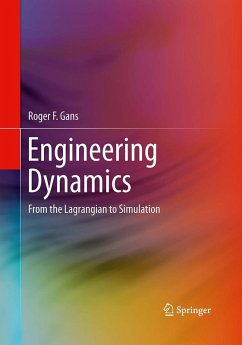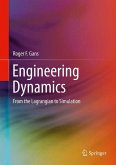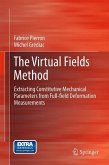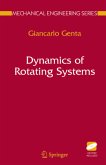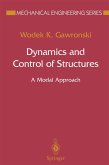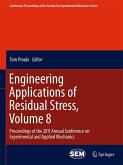This engineering dynamics textbook is aimed at beginning graduate students in mechanical engineering and other related engineering disciplines who need training in dynamics as applied to engineering mechanisms. It introduces the formal mathematical development of Lagrangian mechanics (and its corollaries), while solving numerous engineering applications. The author's goal is to instill an understanding of the basic physics required for engineering dynamics, while providing a recipe (algorithm) for the simulation of engineering mechanisms such as robots. The book will be reasonably self-contained so that the practicing engineer interested in this area can also make use of it. This book is made accessible to the widest possible audience by numerous, solved examples and diagrams that apply the principles to real engineering applications.
- Provides an applied textbook for intermediate/advanced engineering dynamics courses;
- Discusses Lagrangian mechanics in the context of numerous engineering applications;
- Includes numerous, solved examples, illustrative diagrams and applied exercises in every chapter
- Provides an applied textbook for intermediate/advanced engineering dynamics courses;
- Discusses Lagrangian mechanics in the context of numerous engineering applications;
- Includes numerous, solved examples, illustrative diagrams and applied exercises in every chapter
From the reviews:
"The goal of this textbook for intermediate and advanced engineering dynamics courses is to provide an understanding of the requirements for the development of a theoretical model - using the methods of Lagrangian mechanics - and the numerical solution of simulated engineering mechanisms. ... book will be appreciated by students, teachers, and practitioners as well. ... At the end of each chapter, a list of additional examples is provided. This will allow the reader to test his/her ability to apply the theoretical principles to practical engineering problems." (Franz Selig, zbMATH, Vol. 1269, 2013)
"The goal of this textbook for intermediate and advanced engineering dynamics courses is to provide an understanding of the requirements for the development of a theoretical model - using the methods of Lagrangian mechanics - and the numerical solution of simulated engineering mechanisms. ... book will be appreciated by students, teachers, and practitioners as well. ... At the end of each chapter, a list of additional examples is provided. This will allow the reader to test his/her ability to apply the theoretical principles to practical engineering problems." (Franz Selig, zbMATH, Vol. 1269, 2013)

